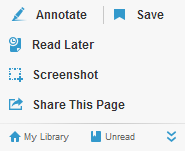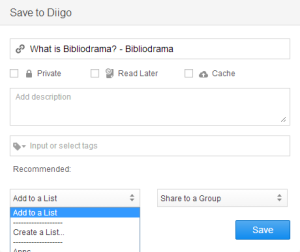 Social bookmarking is a relatively new term for me, and i’m more than sure many teachers are unaware of this essential tool for knowledge management. As teachers we are now spending a big part of our day working with online information – searching, finding and creating new resources for students. Yet our workflow with information is still largely inefficient – we’re not coping with the endless amounts of knowledge. Losing links and forgetting webpages all become too regular as a result of not managing our online knowledge and information.
Social bookmarking is a relatively new term for me, and i’m more than sure many teachers are unaware of this essential tool for knowledge management. As teachers we are now spending a big part of our day working with online information – searching, finding and creating new resources for students. Yet our workflow with information is still largely inefficient – we’re not coping with the endless amounts of knowledge. Losing links and forgetting webpages all become too regular as a result of not managing our online knowledge and information.
Since starting my masters degree, my time online has tripled. Searching, collecting and organizing thesis research, module study , assignment research etc, has provided many problems in terms of storing my information overload. For example, since signing up to Twitter, my library of resources for teaching has reached an ultimate high and is still growing. However, since signing up to Diigo, I have found a solution for managing my knowledge and information overload.
Diigo (pronounced Dee’go) has allowed me to streamline my recent information overload. Thank God!
Uses and benefits for Diigo
1. Read more effectively with additions tools
Annotate; Highlight web pages as you read them.
Save; Keep forever in your Diigo library.
Screenshot; Take a snapshot of the page your reading.
Collaborate; Share the web page with your followers.
2. Automatically build your personal library
By clicking the Diigo icon, the web page that you highlight, add sticky notes to or screenshots while browsing the web automatically go into your library and can be accessed from anywhere.
3. Organize your information
Diigo automatically titles your web page.
You then have the options to add a description and add tags to the webpage.
Then you can future organize your information by creating a list which sub-divides your information into categories (or lists). This makes is easier to find and store your information.
4. Collaboration made easy
Collaboration is also made easier by sharing your webpage with a specific group you have set up. For example, different subject departments within a school can set up a Diigo account, which enables them to share resources for teaching.
Each member of the department can add to or access the library of resources, making collaboration easy.
Members can also interact with on-the-page annotations, for example; commenting on resources using the sticky notes – the success/failure of such a resource etc.
5. Access to a new world of endless resource sharing
 Diigo has opened the doors to a new world of resources, in some ways it is like Twitter, an endless amount of resources that i’m waiting to discover.
Diigo has opened the doors to a new world of resources, in some ways it is like Twitter, an endless amount of resources that i’m waiting to discover.
Following people with the same interests allows you to access their library of knowledge (once it is public of course!).
This gives you access to an online community of sharing resources with little or no limits once personal library’s are made public.




You must be logged in to post a comment.